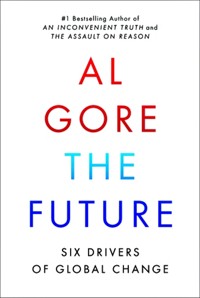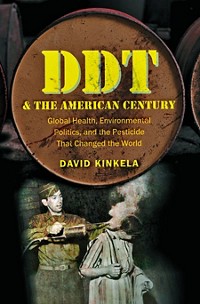Advertisement
Grab your lab coat. Let's get started
Welcome!
Welcome!
Create an account below to get 6 C&EN articles per month, receive newsletters and more - all free.
It seems this is your first time logging in online. Please enter the following information to continue.
As an ACS member you automatically get access to this site. All we need is few more details to create your reading experience.
Not you? Sign in with a different account.
Not you? Sign in with a different account.
ERROR 1
ERROR 1
ERROR 2
ERROR 2
ERROR 2
ERROR 2
ERROR 2
Password and Confirm password must match.
If you have an ACS member number, please enter it here so we can link this account to your membership. (optional)
ERROR 2
ACS values your privacy. By submitting your information, you are gaining access to C&EN and subscribing to our weekly newsletter. We use the information you provide to make your reading experience better, and we will never sell your data to third party members.
Environment
Mineral Resources And Society
A pair of books examine social science research, geopolitical impacts of the extractive industries
by Saleem H. Ali
July 16, 2012
| A version of this story appeared in
Volume 90, Issue 29

Concerns about natural resource scarcity have prompted social scientists to take a strong interest in mineral resources, from points of extraction to consumer use. The most provocative aspect of social science research on extractive industries has been “the resource curse” theory. This broad-ranging theory, proposed largely by economists and political scientists, suggests that mineral wealth has attributes that correlate with negative development outcomes for countries.


Various natural resources—including diamonds and coltan (columbium and tantalum ores), which are fueling conflict in Central Africa—have been the focus of resource curse studies and efforts to address the problem, such as the Kimberley Process, which was devised to prevent so-called conflict diamonds from entering the mainstream rough-diamond market.
Both Michael T. Klare and Michael L. Ross have published widely on the resource curse, covering various extractive industries. Klare’s publications, written largely for popular audiences, are based on secondary material. Ross has published several technical studies predicated on regression analyses of development indicators, as well as policy analysis articles.
In their most recent books—Klare’s “The Race for What’s Left: The Global Scramble for the World’s Last Resources” and Ross’s “The Oil Curse: How Petroleum Wealth Shapes the Development of Nations”—both scholars attempt to synthesize perspectives on the future of resource conflicts. Ross focuses on what he views as the most consequential extractive resource, oil, whereas Klare grapples with the larger question of mineral scarcity for human use and the geopolitical impacts of seeking minerals in ever more remote parts of the planet.
Chemists have often struggled with the notion of “nonrenewability” of an element as described in environmental studies discourse. The elements, after all, are infinitely renewable through chemical reactions so long as the requisite energy can be applied. (Many social scientists fail to note that only a nuclear reaction can truly transform an element.)
Indeed, the question of resource scarcity of the elements, most notably metals, cannot be framed without reference to energy resources. For this reason, coal, oil, and natural gas, which are the most commonly used forms of industrial energy, need to be considered in sync with elemental scarcity.
Klare makes this connection by including a chapter in “The Race for What’s Left” on oil sands and shale gas alongside one on rare-earth minerals (largely elements from the lanthanide and actinide rows of the periodic table). He also takes the next step of focusing on the scarcity of land for competing resource uses, most notably agriculture. Interwoven within the engaging anecdotes of icebreakers searching for oil and gas in the Arctic and gold rush frontiers in Mongolia is an urgent concern about the geopolitical conflict this scramble for minerals might create.
Klare’s tone is more measured than in his earlier book “Resource Wars,” but he remains highly skeptical of technological fixes to our predicament. Indeed, concern is growing even among technologists that many energy-saving devices themselves depend on rare-earth minerals. Hence the nexus between energy and the elements becomes even more confounding.
A study by a research team at Massachusetts Institute of Technology published shortly before “The Race for What’s Left” came out, for example, warns of severe scarcity of rare earths if green technology demand continues at projected rates (Environ. Sci. Technol., DOI: 10.1021/es203518d). What such works on metal scarcity tend to neglect, however, are the growing efforts by industry to redesign products to make recovery and recycling of materials easier. Designing products for resource recovery according to an industrial ecology paradigm may well be our best bet to avert serious geopolitical struggles over minerals.
That said, it is unfortunately true that geopolitical approaches to resource scarcity are thus far following a more belligerent and less technically informed approach. Most recently, the Obama Administration’s decision to lodge an official complaint against China with the World Trade Organization regarding its reduction of rare-earth mineral exports gives further credence to Klare’s concerns. Ironically, the reason given by China for reducing the supply of rare earths is to ameliorate environmental standards at its mines, which is exactly what U.S. environmental interests have often called for. Economic expediency and ecological planning clearly need to be more functionally operationalized within the context of mineral policy.
In contrast with “The Race for What’s Left,” Ross’s “The Oil Curse” is less concerned about resource scarcity per se and more interested in the qualitative impact of mineral extraction. Apart from his academic work, Ross has also advised nonprofit organizations such as Oxfam, and he acknowledges the support he received from the Revenue Watch Institute, an organization established by philanthropist George Soros to promote transparency in natural resource economies. To his credit, Ross notes that earlier studies he conducted had perhaps been too simplistic and that he appreciates the criticism he received from other academics, which helped him refine his methods for the current volume. Ross’s empirically driven tone and willingness to engage with criticism give the volume further credibility, but his use of statistical regression to explain causality between oil wealth and social problems still requires underlying assumptions.
The premise of “The Oil Curse” is that hydrocarbon wealth has four key attributes that lead to its potential for being “cursed”: scale, source, stability, and secrecy. Hydrocarbon projects have massive capital investment (scale); they are not funded by citizen taxation or innovation incentives and are hence less connected to democratic parameters (source); they are beholden to volatile commodity markets (stability); and revenues from oil are easy to conceal given the contract norms between companies and governments (secrecy).
Ross further contends that the curse started to gain traction when state-run oil companies became more common. Such companies have much less accountability than privately held firms, and Ross considers their structure a major cause for perpetuating the “oil curse.” Therefore, although corporate executives may find Ross’s negative revelations about the essential lubricant of modern capitalism to be troubling, they can gain some solace that he strongly blames this outcome on government control of industry. However, Ross remains nuanced about assigning culpability by also noting that private-sector management still needs some government oversight to be constructive.
Ross’s key prescription to grapple with the oil curse is developing mutual accountability between the private and public sectors. Taxation remains an important tool in this context to ensure that sudden wealth accumulated by corporate oligarchs can be better distributed across a population. Domestic legislation requiring transparency to track resource royalties and their spending and the international norms that hold companies and governments accountable through treaty obligations or trade norms are likely to prevent the oil curse.
Even though Ross’s analysis of the macroeconomic impacts of oil wealth is compelling, he tends to stretch their implications by focusing on tenuous indicators such as women’s rights. Chapter 4, “Petroleum Perpetuates Patriarchy,” is perhaps the least convincing part of the book. Although it offers an alternative narrative to dominant views on the misogynistic laws of some Middle Eastern countries and may win applause for political correctness, the causal linkages argued here are flimsy. Underplaying the role of Islamic tradition and myriad historical factors, which a regression-based methodology cannot possibly account for, renders this chapter weak.
Ross also tends to use data selectively, thereby missing the forest for the trees. For example, Ross heralds non-oil-producer Morocco for female emancipation and literacy (as a percentage of the total literate population), while ignoring the fact that in total, the country has the lowest literacy rate of all the Maghreb countries. At the same time, he neglects multi-billion-dollar investments in education and female literacy by oil producer Qatar.
Ross’s perspectives on connecting gender rights to hydrocarbon economies have been critiqued widely in the literature by scholars such as Pippa Norris and is problematic for policy reform efforts in the Middle East on issues such as women’s rights. For example, Ross’s analysis can be used to undermine activism for curricular reform in Islamic schools by deflecting the conversation toward oil, rather than addressing the theological inertia that is directly linked to misogynistic practices. When making such broad causal connections, social scientists need to be more wary of presenting tenuous theories of underdevelopment that could be misused to perpetuate negative cultural inertia.
Despite Ross’s methodological overstretch and Klare’s tendency to be a polemical pessimist, both books are important, because the role of minerals in our lives needs to be examined critically. Ross and Klare are to be applauded for advancing the conversation beyond reveling in the history of human extraction of resources to expressing sorrow for the negative impacts of mineral rushes, which most social science books in this genre tend to follow.
They are also willing to engage with the tough issues around scarcity, underdevelopment, and conflict that celebrated writers on mineral history and policy such as Daniel Yergin (author most recently of “The Quest”) have deliberately avoided because of their strong connections to industry.
Although technological efforts must continue to improve our chances to meet the mineral needs of society, a sanguine reliance on technology to resolve the social issues of extractive economies would be reckless.
Cautionary narratives such as these books are important for engineers and chemists to read to further hasten the search for solutions to resource scarcity dilemmas. At the same time, social scientists who usually present governance solutions focused on transparency around the extractive sector should couple their approach with a greater understanding of technical processes. Understanding mineral cycles and basic concepts around natural resource use such as entropy and exergy could further inform the research of scholars such as Klare and Ross.
The primacy of minerals as our ultimate resource base and the reliance of modern society on the elements must never escape our policy horizon. As the U.S. Congress considers legislation related to extractive industries—from reforming the 1872 Mining Act to amending the conflict-mineral provisions of the Dodd-Frank Wall Street Reform & Consumer Protection Act—we need informed analyses on mineral economies. International efforts such as the Extractive Industries Transparency Initiative and myriad industrial efforts to improve corporate social responsibility need to be watched closely for progress.
Reading Klare and Ross should provoke us to be concerned, even if we do not agree with all of their conclusions. Scholars across disciplines have much to contribute in finding effective means of harnessing the full potential of minerals in improving our lives without irreversibly harming the planet.
Saleem H. Ali is director of the Centre for Social Responsibility in Mining at the University of Queensland, in Australia. He can be followed on Twitter @saleem_ali.




Join the conversation
Contact the reporter
Submit a Letter to the Editor for publication
Engage with us on Twitter